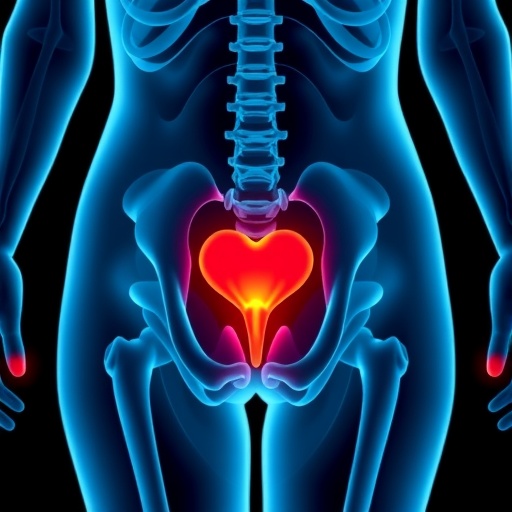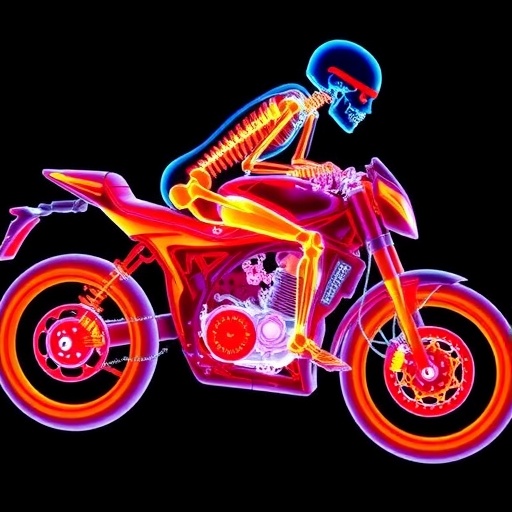Madrid, Spain, 15 June 2017: The results of a study presented today at the Annual European Congress of Rheumatology (EULAR) 2017 showed that low dose computed tomography (LD-CT) is more sensitive than conventional radiographs (X-rays) in the monitoring of disease progression in patients with Ankylosing Spondylitis (AS).
LD-CT, using a newly developed scoring method for assessing bone formation in AS patients, had previously been shown to be reliable and sensitive, with good consistency between different individuals interpreting the images.
In this latest study, designed to further validate LD-CT, a comparison of its ability to demonstrate the formation of new bony growths (known as syndesmophytes ) and / or an increase in size of these syndesmophytes, showed that LD-CT consistently detected more AS patients with these signs of disease progression than conventional X-rays.
"Standard dose computed tomography is a sensitive method for assessing structural changes in the spine in patients with AS," said lead author Dr. Anoek de Koning from the Leiden University Medical Centre, Leiden, Netherlands. "However, its clinical utility has been limited due to its use of relatively high doses of ionising radiation."
"Our findings support the use of LD-CT as a sensitive method for the assessment of new or growing syndesmophytes in future clinical research without exposing patients to high doses of radiation," she concluded.
Comparing the percentage of patients with newly formed syndesmophytes, growth of existing syndesmophytes and the combination of both, scored by two separate investigators and as a consensus score, LD-CT detected more patients with progression in all comparisons. This was especially apparent where there was a higher number of new or growing syndesmophytes per patient.
With the strictest comparison of the consensus score for both LD-CT and X-rays, 30% of the patients showed bony proliferation (newly formed and growth) at 3 or more sites on LD-CT, compared with only 6% on conventional X-rays.
Patients were recruited from the SIAS (Sensitive Imaging of Axial Spondyloarthritis) cohort from Leiden, the Netherlands and Herne, Germany. 50 AS patients were included based on modified New York criteria , the presence of one or more syndesmophytes on either the cervical and / or lumbar spine seen on X-ray, and one or more inflammatory lesions on an MRI of their whole spine.
Each of these patients had conventional X-rays of the lateral cervical and lumbar spine and LD-CT of the entire spine at baseline and two years. Two investigators independently assessed the images in separate sessions. Images were paired per patient, blinded to time order, patient information, and the result of the other imaging technique.
For LD-CT, syndesmophytes were scored in the coronal and sagittal planes for all ''quadrants' per view, thus scoring 8 ''quadrants' per vertebral unit. The formation of new syndesmophytes, growth of existing syndesmophytes and the combination of both was calculated per quadrant. Syndesmophytes were scored as absent (score 0),
AS is a painful, progressive and disabling form of arthritis caused by chronic inflammation in the spine. Prevalence of AS varies globally, and is estimated at 23.8 per 10,000 in Europe and 31.9 per 10,000 in North America.
###
Abstract Number: OP0114
NOTES TO EDITORS:
For further information on this study, or to request an interview with the study lead, please do not hesitate to contact the EULAR congress Press Office in the Goya Room at the IFEMA, Madrid during EULAR 2017 or on:
Email: [email protected]
Onsite tel: +44 (0)7786 171 476 / +34 91722 3115
Twitter: @EULAR_Press
Youtube: Eular Press Office
About Rheumatic and Musculoskeletal Diseases
Rheumatic and musculoskeletal diseases (RMDs) are a diverse group of diseases that commonly affect the joints, but can also affect the muscles, other tissues and internal organs. There are more than 200 different RMDs, affecting both children and adults. They are usually caused by problems of the immune system, inflammation, infections or gradual deterioration of joints, muscle and bones. Many of these diseases are long term and worsen over time. They are typically painful and Iimit function. In severe cases, RMDs can result in significant disability, having a major impact on both quality of life and life expectancy.
About 'Don't Delay, Connect Today!'
'Don't Delay, Connect Today!' is a EULAR initiative that unites the voices of its three pillars, patient (PARE) organisations, scientific member societies and health professional associations – as well as its international network – with the goal of highlighting the importance of early diagnosis and access to treatment. In Europe alone, over 120 million people are currently living with a rheumatic disease (RMD), with many cases undetected. The 'Don't Delay, Connect Today' campaign aims to highlight that early diagnosis of RMDs and access to treatment can prevent further damage, and also reduce the burden on individual life and society as a whole.
About EULAR
The European League Against Rheumatism (EULAR) is an umbrella organisation which represents scientific societies, health professional associations and organisations for people with rheumatic and musculoskeletal diseases throughout Europe. EULAR aims to reduce the burden of rheumatic and musculoskeletal diseases on individuals and society and to improve the treatment, prevention and rehabilitation of rheumatic and musculoskeletal diseases. To this end, EULAR fosters excellence in education and research in the field of rheumatology. It promotes the translation of research advances into daily care and fights for the recognition of the needs of people with musculoskeletal diseases by the governing bodies in Europe through advocacy action.
To find out more about the activities of EULAR, visit: http://www.eular.org
Media Contact
EULAR Press Office
[email protected]
34-917-223-115
@eular_org
http://www.eular.org
https://www.eular.org/congresspressreleases/Low-dose_CT_scanning_improves_assessment_of_Ankylosing_Spondylitis_patie.pdf
############
Story Source: Materials provided by Scienmag




